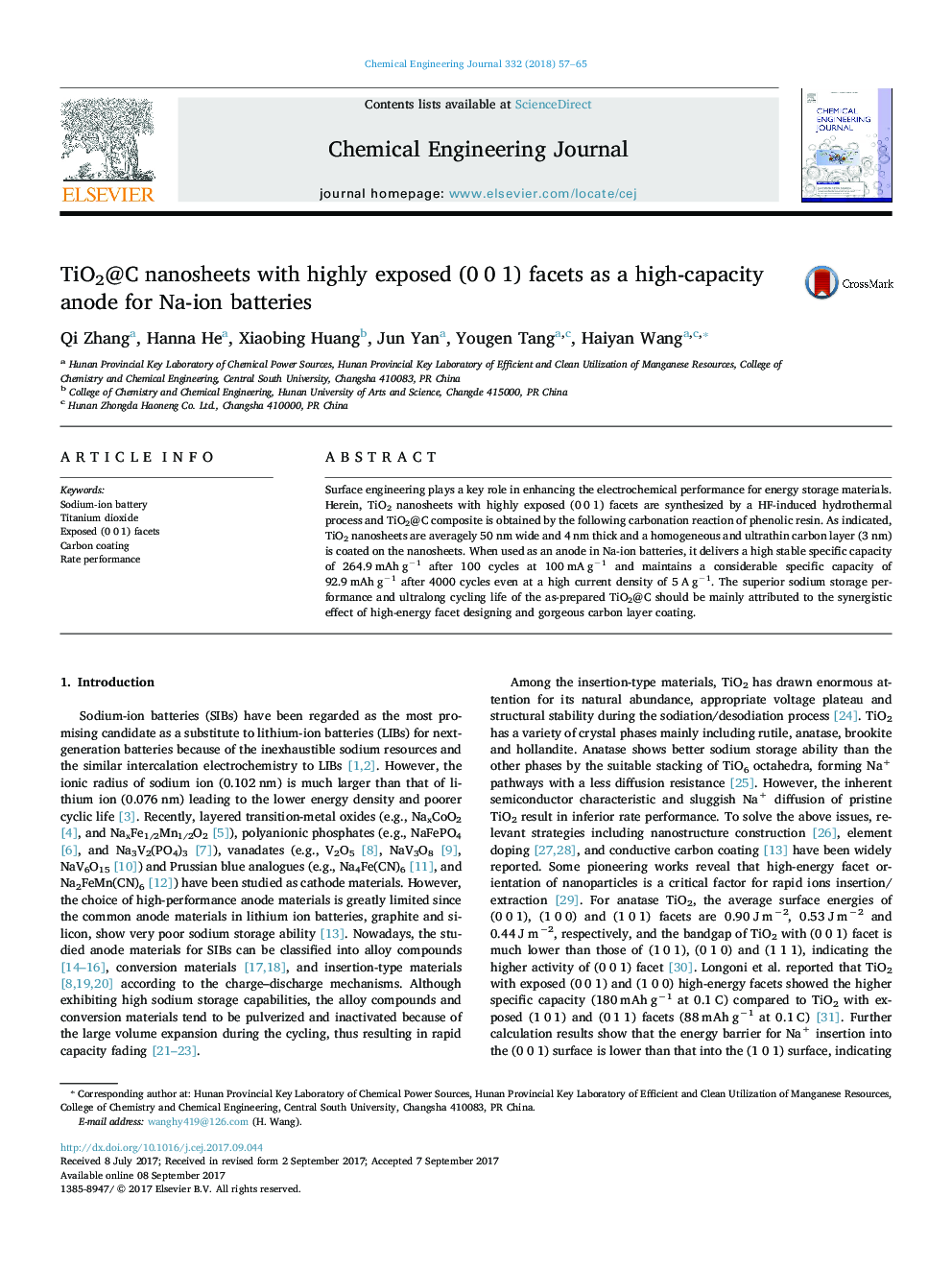| Article ID | Journal | Published Year | Pages | File Type |
|---|---|---|---|---|
| 6464977 | Chemical Engineering Journal | 2018 | 9 Pages |
â¢TiO2 nanosheets with exposed (0 0 1) facets and carbon coating were obtained.â¢High-energy crystal facets contributed to high sodium storage capability.â¢Thin carbon coating prevented aggregation of nanosheets in preparation and cycling.â¢TiO2@C nanosheets exhibited a high reversible capacity and good rate capability.
Surface engineering plays a key role in enhancing the electrochemical performance for energy storage materials. Herein, TiO2 nanosheets with highly exposed (0 0 1) facets are synthesized by a HF-induced hydrothermal process and TiO2@C composite is obtained by the following carbonation reaction of phenolic resin. As indicated, TiO2 nanosheets are averagely 50 nm wide and 4 nm thick and a homogeneous and ultrathin carbon layer (3 nm) is coated on the nanosheets. When used as an anode in Na-ion batteries, it delivers a high stable specific capacity of 264.9 mAh gâ1 after 100 cycles at 100 mA gâ1 and maintains a considerable specific capacity of 92.9 mAh gâ1 after 4000 cycles even at a high current density of 5 A gâ1. The superior sodium storage performance and ultralong cycling life of the as-prepared TiO2@C should be mainly attributed to the synergistic effect of high-energy facet designing and gorgeous carbon layer coating.
